Meet the Real ‘Snowbirds’ of Florida
Fun fact: Migratory birds far outnumber people flying south to the Sunshine State each winter
Humans aren’t the only ones flocking to Florida to escape cold winters up north: Many bird species make a similar trek.
Each year, millions of birds fly south to the Sunshine State, setting up temporary residences and basking in the warmer weather. But they don’t all stay through the winter — some are just passing through on their way to the Bahamas or South America. Still, while their human counterparts may be referred to jokingly as “snowbirds,” these winged creatures are the real deal.
Whether they migrate or not, all native birds are protected under the federal Migratory Bird Treaty Act, according to the Florida Fish and Wildlife Conservation Commission. As a result, it is illegal to tamper with these birds, their eggs, nests or young, the agency notes.
As with many other animal species, habitat loss and degradation are the biggest threats to birds in the state. And unfortunately, populations are declining for some species that migrate to — or through — Florida each year.
Want to know what feathered visitors you could see this winter? Here are six migratory species you may spot.
Painted Bunting
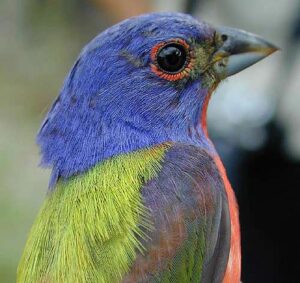
Consider yourself lucky if you live in the coastal areas of northeast Florida where these birds live and breed year-round. But, if you live in southern Florida, you’ll get a chance to witness the males’ brilliant colors and bright warbling songs when migrating Buntings arrive for the winter.
These secretive birds typically seek out dense cover in brushy areas and woodland edges, but can still be enticed to your backyard feeder. In addition to the brightly colored males, keep a look out for the more camouflaged, green females.
Live Wildly Tip: If you live where these birds hang out, you can attract them to your feeder by filling it with white millet and placing it in a spot near low-lying dense shrubs.
This species migrates south as early as mid-August but the majority arrive in central and south Florida in early October, according to the National Audubon Society. Most return north by March, but some remain until April.
Unfortunately, this species has been declining for decades due to habitat loss and capture for the illegal caged bird trade. Researchers hope that data on the painted buntings’ winter whereabouts and numbers could help them better understand recent declines in certain states, including Florida.
Activities like the ‘Great Backyard Bird Count’ help everyday people contribute to scientists’ research on certain bird species’ whereabouts and numbers.
Greater Sandhill Crane
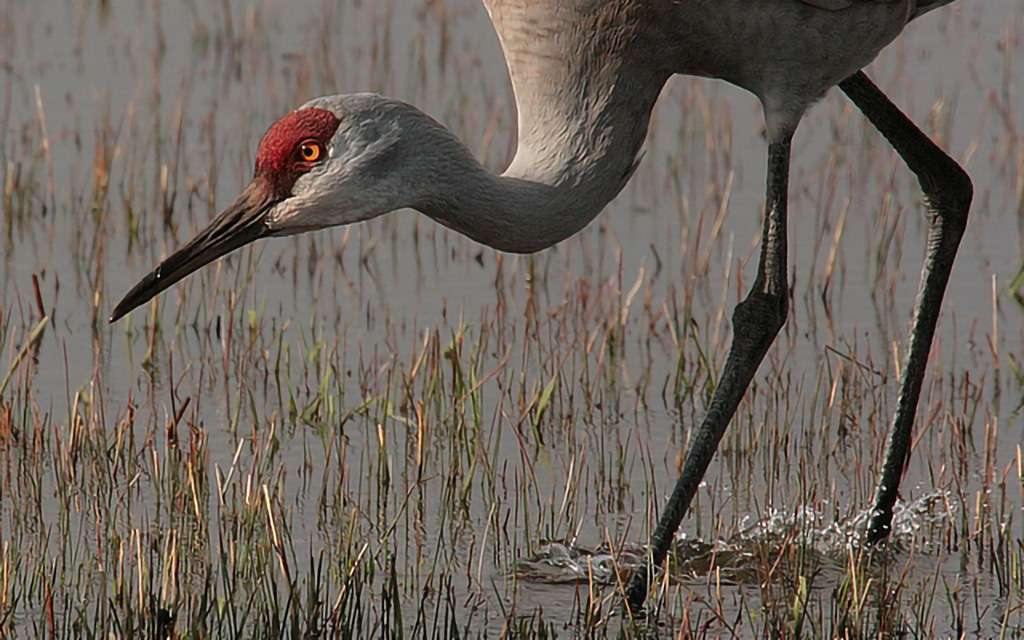
While the state provides a year-round home to some 4,000 to 5,000 non-migratory Florida sandhill cranes, the population skyrockets each winter with the arrival of as many as 25,000 greater sandhill cranes.
The migratory subspecies, which is slightly larger than its local cousin, flocks to the Sunshine State from the Great Lakes region, where it nests.
Did You Know? The earliest Sandhill Crane fossil — an estimated 2.5 million years old — was found in Florida, according to the Florida Birding Trail.
While current populations are steady or increasing, the species’ dependence on places where they stop and temporarily rest before continuing their migration makes them vulnerable to loss of habitat in the future, the National Audubon Society says. In addition, the species has begun migrating later in the fall and earlier in the spring, with some birds spending the winter farther north than in the past.
Solitary Sandpiper
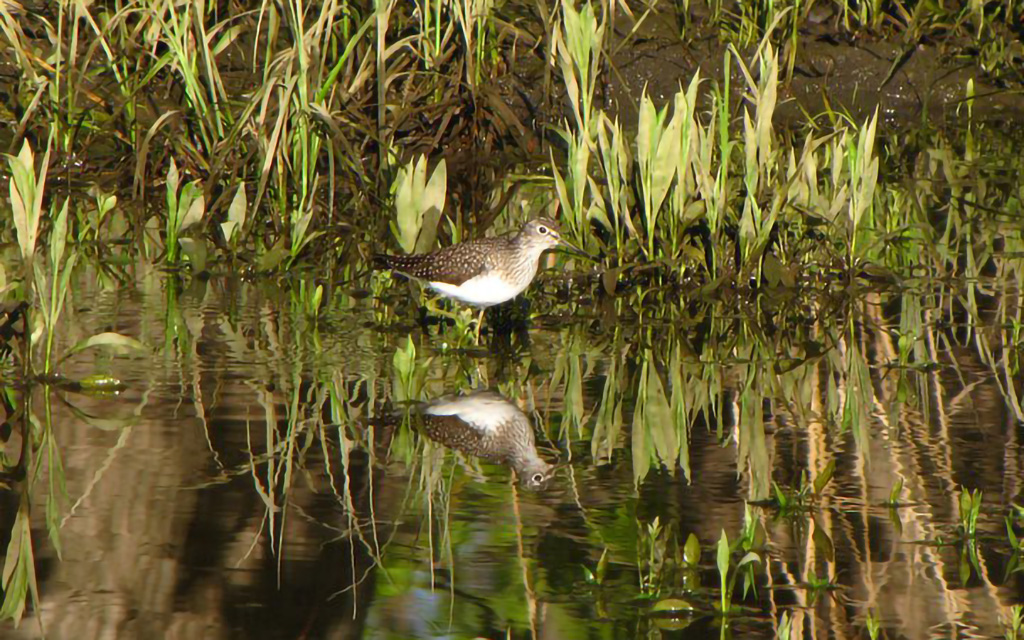
Most sandpipers migrate in flocks — but not this one! As its name suggests, this species likes to fly solo on the long journey from its summer home in the forests of Alaska and Canada to its winter residence in the Caribbean and South America.
In between its twice-a-year migration, the species can be spotted in Florida between March and May and from July to October. There are even reports of a few birds hanging out all winter in South Florida.
Did You Know? In addition to flying solo, this bird likes to migrate at night.
Because the birds are so widely dispersed across all seasons, it’s difficult to nail down how the population is doing, according to the National Audubon Society. However, there hasn’t been a noticeable recent decline in numbers.
American Redstart
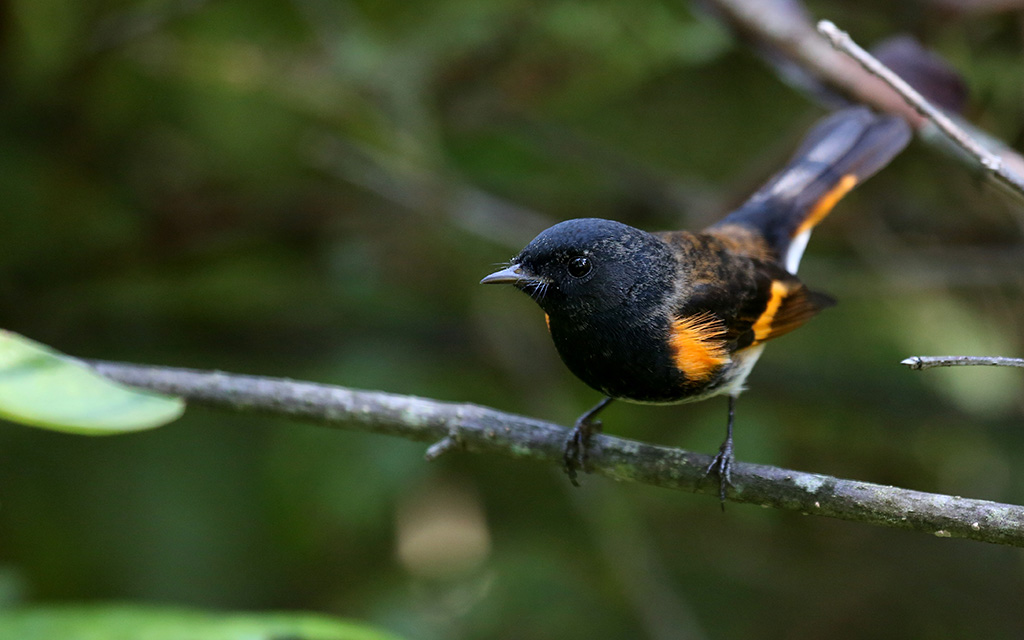
This lively warbler likes to migrate through Florida, with some choosing to spend the entire winter in far southern parts of the state. As with the greater sandhill crane, this species mostly migrates at night.
During the daytime in winter, you can find America redstarts in almost any place with trees. These birds often like to flit about the branches, usually holding their wings and tails partly spread, showing off beautiful patches of color.
Did You Know? Warblers are often called “the butterflies of the bird world.”
While this species is still widespread, surveys suggest their numbers may be declining slightly, the National Audubon Society reports.
Marbled Godwit
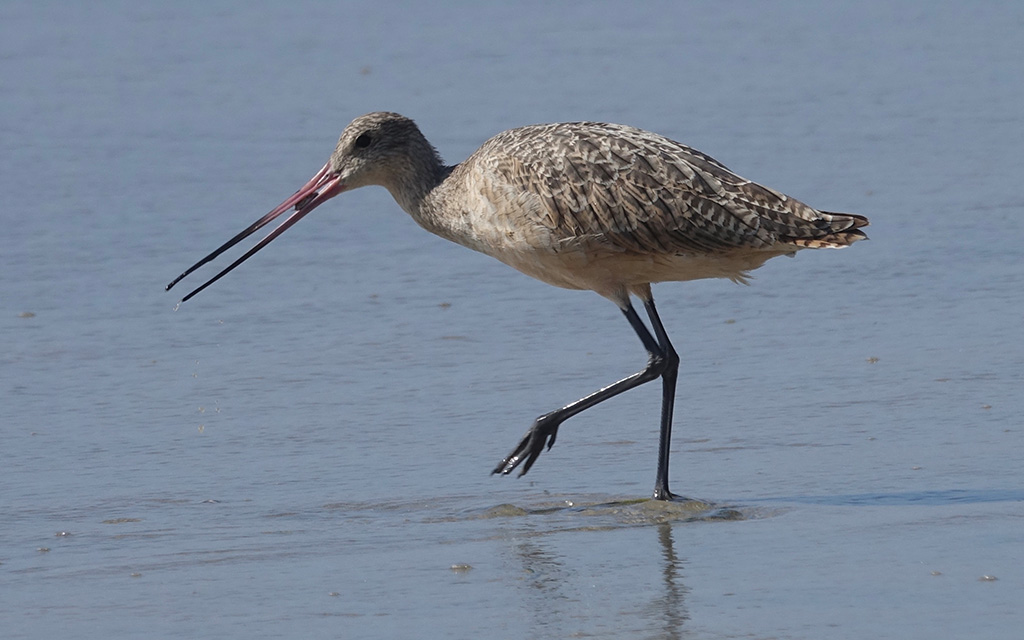
This large cinnamon-colored sandpiper makes the flight down to Florida and other southern locales each year, with large flocks congregating on coastal regions.
You can often spot these birds roosting together in the salt meadows at high tide, or standing together in shallow water, using their long bills to probe deeply in the mud.
The species suffered marked loss from hunting in the 19th century before recovering slightly, the National Audubon Society says. However, its numbers are declining once again as more of their nesting grounds are converted to farmland.
Black and White Warbler
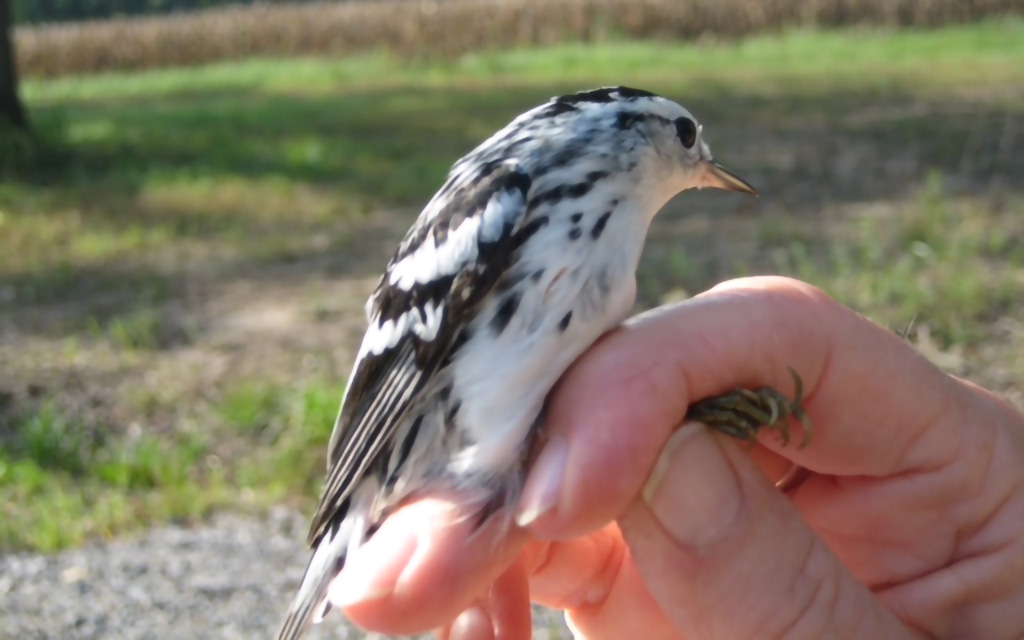
This almost zebra-colored warbler likes to spend the winter in much of Florida, with the exception of the Panhandle region.
Another nighttime migrator, you’ll often find it climbing on tree trunks and limbs in the daytime, seeking insects in the crevices.
Live Wildly Tip: This species is easy to see and recognize, making it a favorite for novice birders.
While the species has disappeared from some former nesting areas in the South and Midwest, it is still fairly widespread, according to the National Audubon Society.
While all these birds may be only temporary visitors to the state we call home, protecting the habitats they rely on in winter is crucial if we want to continue to enjoy their company in the years — and decades — ahead.
Do you have a favorite type of bird that visits Florida or lives here year round? Let us know on social @LiveWildlyFL.
Photos courtesy of the US Fish and Wildlife Service, Florida Fish and Wildlife Services, and Mike’s Birds (CC BY-SA 2.0)

